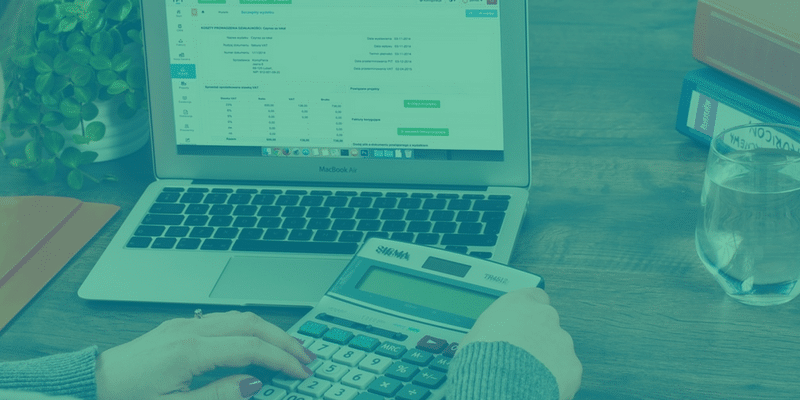E-procurement is also known as electronic procurement, and it’s more commonly a place where an organization uses an internet (or intranet) connection to procure goods and services it needs to function. With e-procurement and procure-to-pay applications, paper-based procurement processes are replaced with a functional and automated workflow that streamlines procurement planning and purchase processes.
Simply put: e-procurement aims to simplify and facilitate purchase processes by offering an integrated suite of procure-to-pay applications for purchase requisitions, sourcing, auctions, spend analysis, billing, contract, and vendor management. So, what are the main functions of an e-procurement system?
1. Procure-to-pay application
The e-procurement software handles the entire procure-to-pay process of requisitioning, purchasing, receiving, and paying for services and materials. With internal inventories and e-catalogs, users can find what they require, compare prices, and make the best choice more efficiently.
2. E-sourcing
An e-sourcing software helps you choose vendors by managing documents like Request for Information, Request for Approval, and Request for Requisition, providing a platform that makes comparison easy. E-sourcing systems also help with the management of purchase requisition and purchase order.
3. Spend analytics
A spend analysis tool validates, classifies, reports, and analyses spend data for accurate spending and data visibility. Spend analysis helps prevent maverick spending, identify new saving areas, and deliver a higher bottom line. Companies with better visibility of their regular spending are better positioned in cost-savings and uniquely positioned to achieve massive cost savings through strategic spend management.
4. Savings tracking
By analyzing spend data from multiple projects and consolidating this data with cost-reduction initiatives, strategic spend management can give you visibility into spending performance and enterprise targets. That enables you to identify possible areas of savings, thus channeling these savings into mission-critical business activities.
5. Contract management
A contract management tool identifies and organizes all the legally binding contracts a company enters into and makes these contracts available for contract negotiation and e-signature processes. A contract management tool tracks procurement contracts and checks for compliance. So, with an e-procurement solution, you can rest assured that your procurement contracts meet the underlying regulatory controls in case of an audit trial.
6. Supplier management
The e-procurement software consolidates the vendor database and manages any supply information. By providing real-time analytics on supplier information and performance, this software makes purchase assessments scientific and eases the path to better supplier relationships.
Benefits of E-Procurement Software
Digitization of your procurement planning and purchase processes eliminates several manual steps while accelerating your procurement workflow and reducing costly human errors. Digitization can reduce processing costs up to 70% in an organization. However, savings is not the only thing that eProcurement offers. When a business deploys e-procurement solutions and achieves a 100% adoption rate, purchasing compliance accelerates ten times, more spending is analyzed, and goods and services can be negotiated at better prices. In addition, e-procurement solutions:
- Rein in maverick expenditure. This means that having better visibility into your spending areas and overall expenditure can help you reduce unnecessary purchases.
- Increase transaction speed. E-procurement software serves a critical function of reducing delays associated with manual processing and accelerating the overall transaction process.
- Standardize purchasing experiences. E-procurement provides users equal access to a large pool of suppliers, enabling them to achieve fair purchase options from a large pool of suppliers. By providing a standard platform for all users, it standardizes the purchase experiences of users.
- Prevent fraud. The e-procurement software matches purchase orders and their invoices and conducts cross-examination of documents for approval. This cross-examination through matching prevents fraud by sealing possible procurement loopholes.
- Spend visibility. The e-procurement systems provide a 100% spend visibility, allowing you to access purchase information from various vendors and make comparisons in real-time. Spend visibility provides real-time, actionable data.
- Alleviating routine tasks. The manual procurement process is a tedious, time-consuming exercise that involves collecting purchase orders, manually feeding PO details, and filing documents. With e-procurement systems, procurement is automated so procurement teams can focus on other strategic business activities.
Functions to look out for in your next procure to pay applications
As you consider deploying an e-procurement system for your enterprise or organization, it’s crucial to consider specific functions the software must accomplish. So, it’s vital to recognize that the primary functions of e-procurement touch on all aspects of an organization, reaching to and benefitting a company’s day-to-day supply chain operations. Here are the main functions of the e-procurement software you must look out for:
- Ability to automate procurement functions to both reduce careless errors and free up time
- Ability to simplify the procurement process through touchless processes, advanced technologies, and compliance steps
- Ability to give stakeholders and employees a centralized platform for monitoring, thus optimizing procurement planning and purchase processes
- Allow streamlined negotiations between multiple stakeholders and partners
ProcurePort – Your Destination for Procure to Pay Applications
As you undertake e-procurement selection and deployment, we advise you to remember that electronic component procurement is not merely about being tactical. It requires you to be flexible and strategic so that you can easily adjust to the constantly changing market conditions. With ProcurePort, we enable you to transition from traditional, paper-based procurement to e-procurement systems with our industry-standard, automated procurement solutions.










